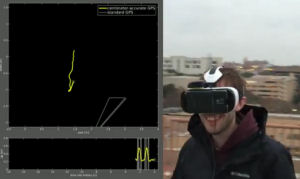
Composed mainly of plastic, improvised explosive devices (IEDs) are notoriously hard to detect. They are typically used by guerillas or terrorist groups in conflict zones, and they kill or mutilate hundreds of thousands of people every year. But researchers at France’s Ecole Polytechnique Fédérale de Lausanne (EPFL) believe they may have found a way to detonate them remotely using electromagnetic pulses. The two researchers, Félix Vega and Nicolas Mora, both from Colombia, conducted the research as part of their doctoral studies at EPFL.
In using electromagnetic pulses for remote detonation, Vega and Mora were confronted with two main technical difficulties. They had to find a way of inducting a current that would be strong enough to set off, at a distance, the detonators of the devices. Secondly, they had to be able to tune the pulse to the resonant frequencies of the various types of mines. As the devices are all constructed in different ways, this presented the greatest challenge.
“We then realized that in spite of the wide diversity of these mines, they are however all in similar frequency ranges,” explains Mora. “So we developed a system that concentrates on those, and thus loses less energy.”
After two years work, EPFL’s Electromagnetic Compatibility Laboratory tested the system in Colombia last year, using actual improvised devices provided by a team of bomb disposal experts. Impressively, the devices were able to be detonated at an average distance of 20 meters. “Now we have to develop a smaller prototype that is weather-resistant and especially easier to transport in the field,” said Vega.
Related:
Academics question surge’s success in Baghdad
Biodiverse regions are hotspots for war
Military Superiority Sometimes A Hindrance To Winning A War

















Comments are closed.